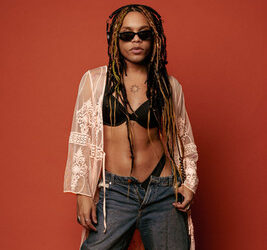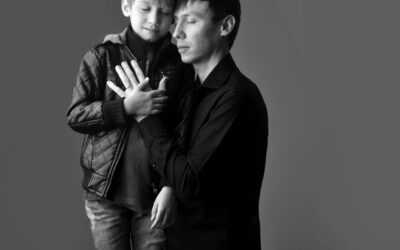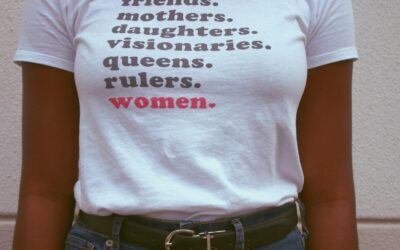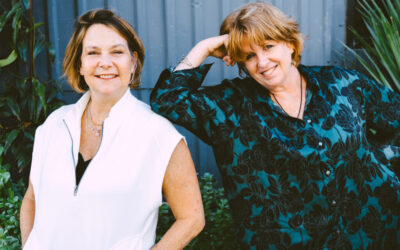Podcast: Play in new window | Download (Duration: 41:35 — 28.6MB)
Subscribe: Apple Podcasts | Spotify | Amazon Music
Treating Attachment & Self-Protective Strategies
“If it protects you, it’s the right strategy.” – Dr Patricia Crittenden, creator of the Dynamic Maturational Model of Attachment & Adaptation (DMM) using culture and context.
LOOKING FOR THE SLIDES?
DOWNLOAD THE PDF HERE: Rudiments-of-the-DMM-PDF VERSION
OR THE POWERPOINT VERSION HERE: Rudiments of the DMM Powerpoint version
Or if you have great eyesight 🙂 you can view them here.
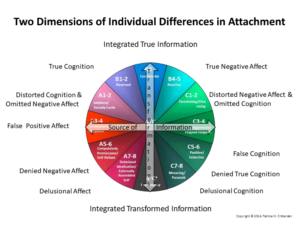
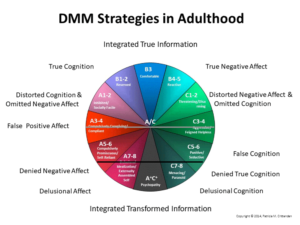
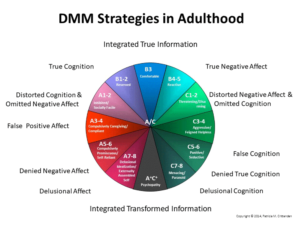
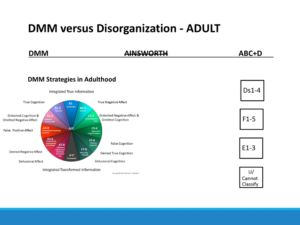
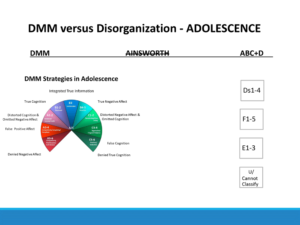
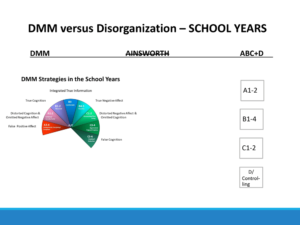
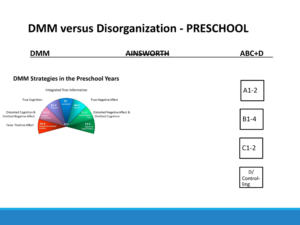
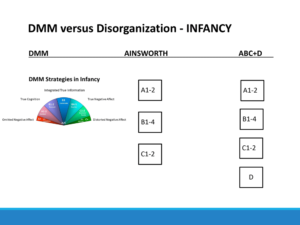
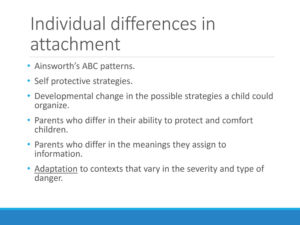
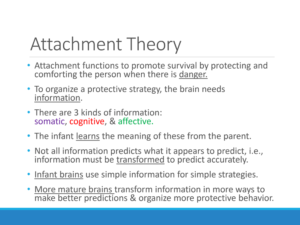
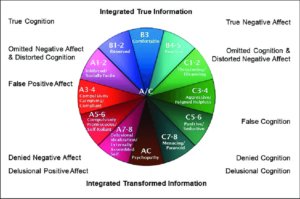
Are you ready to move from describing injured developmental pathways and symptoms – to addressing how to heal from disrupted development? We are on the case! In this episode co-host Sue Marriott LCSW, CGP discusses exactly that with Dr. Patrica Crittenden, founder of the Dynamic Maturational Model of Attachment & Adaption (DMM) using culture and context to understand, decode and heal early relational injuries.
Their conversation was deep and wide, thus will be published in two sections. In today’s episode, TU96, Dr. Crittenden focuses on wide-reaching cultural aspects of development, safety and danger. She uses decades of observations, assessment, research and clinical work to describe her take on what she refers to as the American Attachment researchers and elucidates how her model is similar and where and why it differs.
Dr. Crittenden’s focus on applying this rich research clinically aligns perfectly with the mission of this podcast. Whether you are a clinician, foster parent, educator or are interested for your own personal reasons, you will find her perspective fresh and thought-provoking!
Please see the PACKED resources and show notes below!
Who is Patricia Crittenden and why do want to know her….
 Dr. Mary Ainsworth
Dr. Mary Ainsworth
Dr. Crittenden studied under Mary. D. Ainsworth from 1978 until 1983, when she received her Ph.D. as a psychologist in the Social Ecology and Development Program at the University of Virginia.
In addition to Mary Ainsworth’s constant guidance and support, her psychology master’s thesis on the CARE-Index, was developed in consultation with John Bowlby and her family systems research, on patterns of family functioning in maltreating families, was accomplished with guidance from E. Mavis Hetherington.
 John Bowbly
John Bowbly
Dr. Crittenden has served on the Faculties of Psychology at the Universities of Virginia and Miami and held visiting professorships at the Universities of Helsinki (Finland) and Bologna (Italy) as well as San Diego State University (USA) and Edith Cowan University (Australia).
In 1992 she received a Senior Post-doctoral Fellowship, with a focus on child sexual abuse and the development of individual differences in human sexuality, at the Family Research Laboratory, University of New Hampshire. In 1993-4 she was awarded the Beverley Professorship at the Clark Institute of Psychiatry (Canada).
In the last two decades, Dr. Patricia Crittenden has worked cross-culturally as a developmental psychopathologist developing the Dynamic-Maturational Model (DMM) of attachment and adaptation, along with a developmentally attuned, life-span set of procedures for assessing self-protective strategies. She has received a career achievement award for “Outstanding Contributions to the Field of Child and Family Development” from the European Family Therapy Association in Berlin.
Currently, Dr. Crittenden’s work is focused on preventive and culture- sensitive applications of the DMM to mental health treatment, child protection, and criminal rehabilitation.
Before we begin:
- A’s (Red in the DMM)=Historically referred to as Blue on TU
- B’s (Blue in the DMM)=Historically referred to as Green on TU
- C’s (Green in the DMM)=Historically referred to as Red on TU
- AC’s = Historically referred to Tie Dye on TU
**Note: We know the colors may be a bit confusing, but it is important to us that you receive information as Dr Crittenden has published it. It is by happenstance that our colors are the same (with the exception of tie dye), but they represent different thinking and behavioral patterns. When we refer to color in the episodes and in the show notes, we are referring to the colors we have historically used on the TU podcast and the letters and self-protective strategies of the DMM. This is only in order to maintain consistency and make the information more easily understood by our listeners. However, the colors as shown in the slides and as listed above, are the way Dr Crittenden uses them in her fantastic work!
Therapist Uncensored Episode 96 Shownotes:
“We crave information about danger because we live so safely, and we know there has to be danger out there and our brains are evolved to hunt for it.” – Andrea Claussen, student of Crittenden
What patterns are emerging culturally?
- Life makes sense the way we live in it – the strategy that is dominant in each culture represents the best solution to the problems/for the dangers that are prevalent and have been prevalent historically that these people have experienced
- Western countries have become safer than that ever were before. We’ve fallen in love with the idea of security, but the trick is to survive danger.
- Bowlby knew attachment is about protection from danger and not the state of security.
What is the DMM about?
Crittenden’s work is about “all the things that we do when we’re in danger and how stunningly competent even our infants are at figuring out what you need to do to stay safe here, in this family where I was born, with these parents who live in this culture facing these problems right now and these other problems that the culture knows about historically.”
Infants:
- Embedded in a series of systems
- Only experiences systems through the interaction with parents
- Know historical danger in a pre-conscious way, personal dangers in a more conscious way, may even carry mother’s experience with danger epigenetically
- As infants become preschoolers who become school-aged children who become adolescents repeatedly refine their understanding of how to stay safe in this family, in this setting, in this culture
- As their mind matures and makes it possible for them to use more of the information that is around them.
The socioeconomic biases that predict security in the U.S. are not necessarily what is going to predict safety in the DMM.
Attachment From Bowlby to Crittenden:
- Attachment functions to promote survival by protecting and comforting the person when there is danger
- Attachment is not about security, it is about surviving danger, which is a completely different starting point than American attachment begins with and to organize a protective strategy.
The Brain
- The brain needs information if you’re going to behave in the context of danger in a way that will elicit a attachment, care-giving and protection.
- The brain operates with three kinds of information:
- Somatic information from your body – How does your stomach feel right now? Are Your hands shaking or you aroused?
- Somatic information will override everything else.
- Cognitive – action consequence sequences -straight behavioral learning
- Affective – information that is processed through the limbic system that comes from intense contextual stimulus
- These three sources of information, your body, the temporal consequences and the intensity of signals in the state all give you information that predict danger or safety.
- Infants learn the meanings of these forms of information from interacting with their parents.
Attachment theory in general:
- Infant brains use simple information, and they create simple strategies. More mature brains transform information in more ways and then it better predictions, and they organize more elegant protective behavior
The Differences Between the DMM and American Attachment
Click HERE to download the slides (these will be discussed in detail in Part 2, Ep 97, but you are welcome to check them out here!)
American attachment theory
- Attachment is a characteristic of the infant.
- The A, B, C, D model codes only the infant or only the adult (AAI).
- Attachment is a property of a person, not a relationship.
- Ainsworth named observations in children patterns.
DMM model
- Attachment is not in one person. It is the process between two people that makes the younger weaker, more vulnerable, and the other more safe and comfortable when there is threat.
- Security is not so important. Adaptation is important
- Crittenden calls observations self-protective strategies.
Self-protective strategies:
- Asks “does it protect you in your context?”
- A strategy that is the best solution to the problems in your life context that is adaptive will feel good and comfortable and safe.
American attachment theory assumes a normative, safe environment.
DMM says globally, it is not always safe. A more typical environment has danger in it, and you need to adapt to that.
We need attachment relationships that will protect us in dangerous circumstances.
Find Episode 97, Part Two of this discussion, here.
Gain private access, more in-depth episodes and exclusive content with us through Patreon.
Become a Super Neuronerd, a Gold Neuronerd or an Out and Proud PLATINUM NEURONERD today! 
Join our exclusive community of Therapist Uncensored Neuronerds for just $5 a month!
Help us create a ripple of security by sharing the science of relationships around the globe!
NEURONERDS UNITE! Click here to sign up.
Resources:
Rudiments-of-the-DMM-PDF VERSION
Raising Parents Attachment Representations and Treatment (2008) by Patricia Crittenden
The Organization of Attachment Relationships Maturation, Culture & Context (2000) by Patricia Crittenden
“The secret lives of children” 2017, in Clinical Child Psychology and Psychiatry by Patricia Crittenden
“Dynamic Maturational Model of Attachment and Adaptation – theory and practice” PDF Ed. Ari Hautamaki



